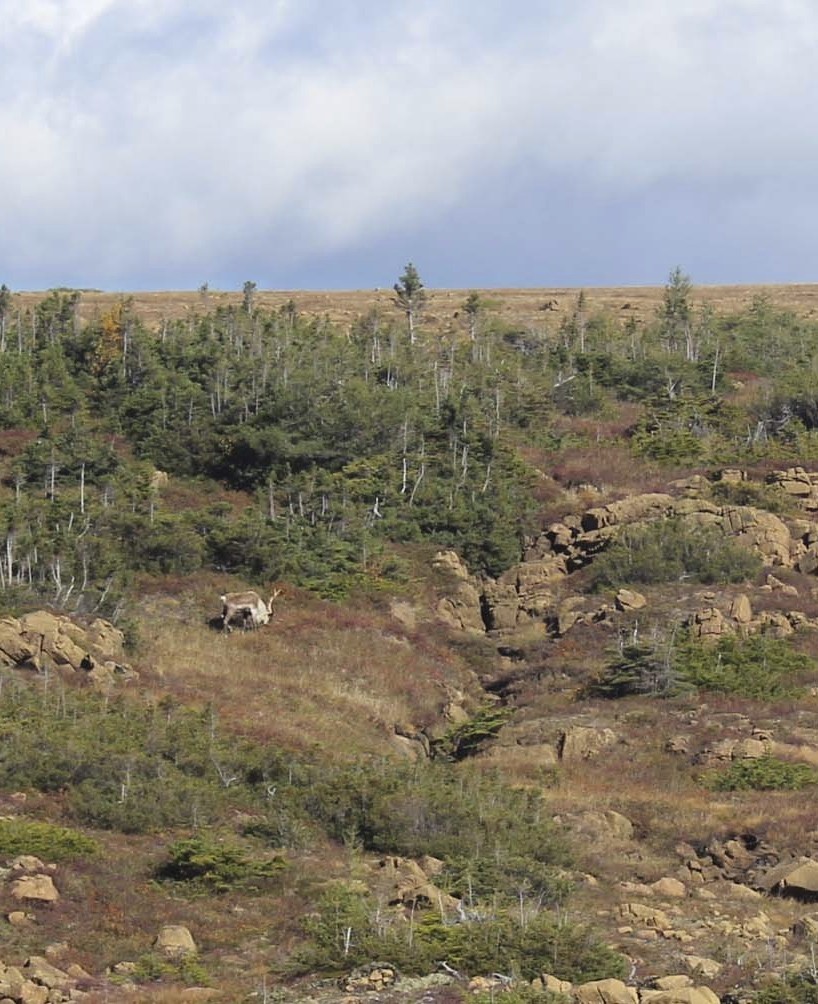the story goes on

On a beautiful fall day, Rob Baldwin snapped this photograph of a caribou at Parc de la Gaspésie in Quebec. Baldwin traveled the length of the North American Appalachians in order to experience conservation research firsthand. He glimpsed parallels between caribou near the tree line in the Chic-Chocs and elk reintroduced to the Smokies—both large mammals attempting to thrive in areas that have multiple uses, from timber harvest to recreation. By defining the interconnected regions that need to be protected for current and future biodiversity, Baldwin’s work can help local groups take action to prepare for the future.
Now, a few years in, you’ll find we’re still pushing limits and telling the stories of researchers who break past boundaries and transform our understanding of the world around us. Conservators, continuing their work on the H.L. Hunley’s hull, work on uncovering a pivotal moment in history that could alter how we think of our past. You can see transformation, right before your eyes, in the new models being developed by students and faculty as they process unprecedented amounts of data using GPUs. With these data visualizations, scientists like Andy Mount and students Caroline Zhang and Paris Smith can examine a tiny barnacle’s formation or a massive burst of energy from Jupiter. Qiushi Chen’s new maps of soil data may expose earthquake hazard zones and save lives by revealing what’s underfoot. From the leaves on a tree to the vastness of forests, Bo Song intends to apply these techniques so that we can gain new insight into ecology. Alex Feltus uses these technologies to explore other complex interrelationships, those between genomes. These novel ways of approaching data force us to break new paths in the scientific wilderness—and they teach us about the world around us.
Whether it’s reading about Sara Riggs designing interfaces that transform human weaknesses into strengths or Michael Porter learning about delicate seahorses to build stronger robotics, the transformative nature of knowledge is the basis of every story in this issue. When faculty and students push through the frontier into the uncharted territories beyond, they change how we understand not only what is but also what could be.
A sense of wonder and excitement about what will be also applies to the business of research. In December, after three years as interim vice president for research, I announced my intention to step aside and help transition a successor until my retirement this summer. On February 1st, Tanju Karanfil, a long-time Clemson faculty leader and a renowned environmental engineer, became vice president for research. I have always considered my role as one in service to my colleagues, to the university, and to our communities of South Carolina and academic research — and I know Tanju shares this perspective. I have confidence that Tanju will push the university to exceed its research goals, breaking past boundaries, while continuing on Clemson’s journey by building Clemson into a major research university.
Larry Dooley
A special thanks is due to Larry Dooley for his stewardship the past three years. Under his leadership, Clemson achieved “highest research activity” Carnegie Classification status, research expenditures have grown, we have solid relationships with research partners, our supporting services are strong and getting stronger, the number of graduate students has increased and the number of postdoctoral fellows has almost doubled. Moreover, Larry has been a trusted colleague and focused on doing what’s best for Clemson.
Research is one of four focus areas of ClemsonForward, the strategic plan for Clemson’s next fifty years. Provost Bob Jones has said Clemson is a great university; we also want to be known as a great research university. In the future, you’ll learn much more about our areas of research emphasis: advanced materials, cyber-infrastructure, big-data science, energy, transportation, advanced manufacturing, health innovation, human resilience, sustainable environment, architecture, education, humanities and the arts.
This issue marks another transition. Neil Caudle was highly experienced in the world of university magazines when we recruited him to launch Glimpse in 2012. Under his parental-like guidance and devotion, the magazine has expanded Clemson’s reach with intelligent, engaging storytelling, winning awards and the admiration and loyalty of its readers. Last October, Neil surprised us with his intention to retire, and surprised us even more when he actually did retire in December. Thank you, Neil, from all of us at Clemson, for helping share our research stories with the world. We promise to keep telling those stories.
Tanju Karanfil
Vice President for Research


